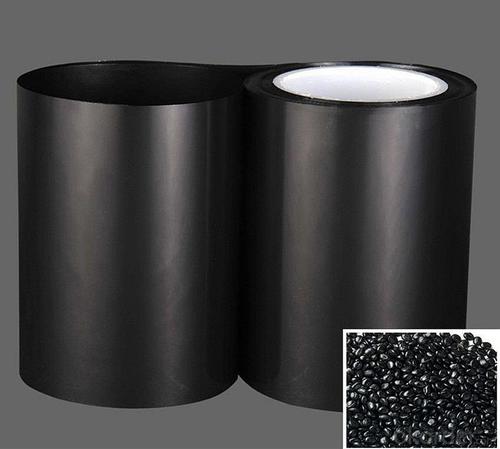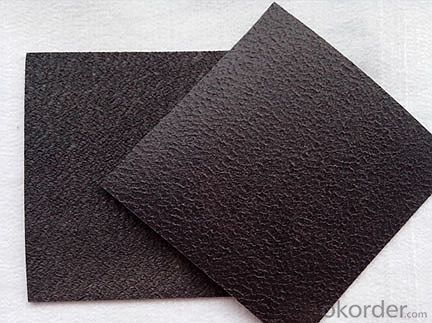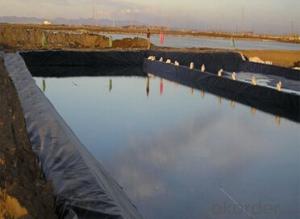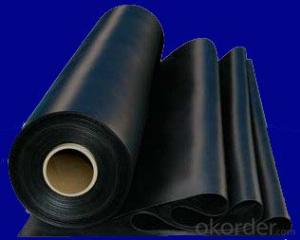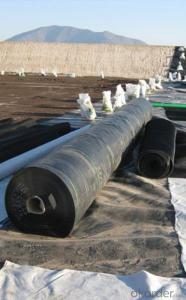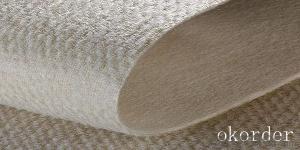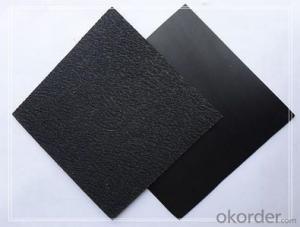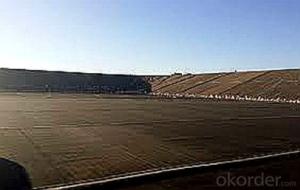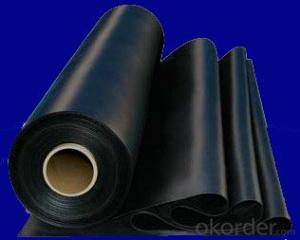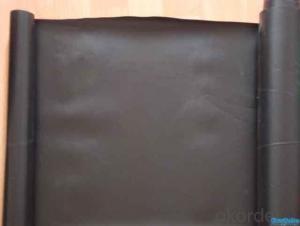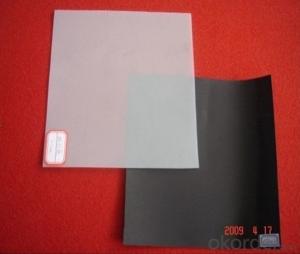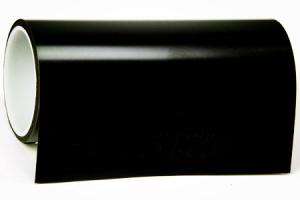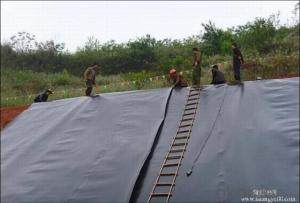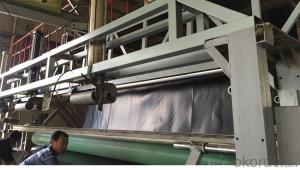Low-Density Polyethylene Geomembrane for Reserve Water - Geomembrane Sheet Price in Pakistan
- Loading Port:
- China main port
- Payment Terms:
- TT OR LC
- Min Order Qty:
- 1000 m²
- Supply Capability:
- 10000000 m²/month
OKorder Service Pledge
OKorder Financial Service
You Might Also Like
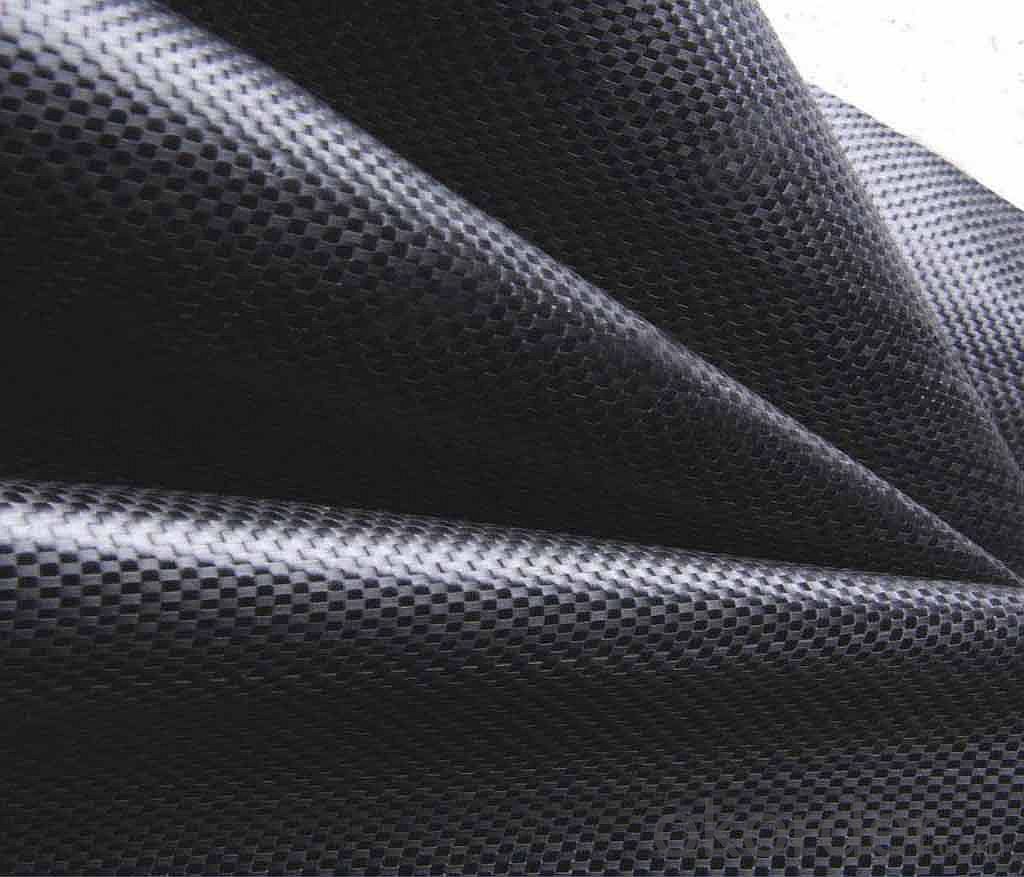
LLDPE Geomembrane
Thickness: 0.5mm to 3.0mm
Roll Size: 4m-9m in width
roll length as design or client’s request
Technical specifications of HDPE geomembrane:
a) Density ≥ 0.94g/m2
b) Tensile Strength ≥25Mpa
c) Elongation at Break ≥ 550%
d) Right-angled Tear ≥ 110N/mm
e.)Puncture Strength ≥ 550N
f.) Permeability Coefficient ≤1.0xe-13gNaN/(cm2.S.Pa)
Our Service
1.On a regular basis or as per your request,we entrust national testing agencies to conduct quality inspections
2. Strictly in accordance with the ISO9001-2008 international quality system standard,we monitor and manage the whole process throughout production,quality testing,and measurement to ensure product quality
3. For quality-related construction delay or substandard construction(except for damage or losses due to customer’s responsibility or irresistible natural disasters),we have refunding,replacement,and repair services.We will respond to customers’ feedbacks on quality issues within 24 hours.
FAQ:
Q: What kind of payments does jenor support?
A: T/T, L/C, Cash are accepted.
Q: Do you charge for the samples?
A: Accordeing to our company policy, the samples are free, we only charge the freight fee. And we will return the freight fee during the next order.
Q: Can you produce according to customers' design?
A: Sure, we are professional manufacturer, OEM and ODM are both welcome.
Q: Do you have other products?
A: Yes, please check the pictures:
- Q: Can geomembranes be used in fish hatcheries and aquaponics systems?
- Yes, geomembranes can be used in fish hatcheries and aquaponics systems. Geomembranes are impermeable liners that are commonly used for lining ponds, tanks, and other containment systems. They can help prevent water leakage and maintain proper water levels, which is crucial for fish hatcheries and aquaponics systems. Additionally, geomembranes can also protect the underlying soil from contamination and help maintain water quality, making them suitable for these applications.
- Q: What is the cost of a geomembrane installation?
- The cost of a geomembrane installation can vary depending on various factors such as the size of the area, type of geomembrane material used, site conditions, and labor costs. It is best to consult with a professional installer or contractor to get an accurate estimate for your specific project.
- Q: How do geomembranes prevent liquid and gas migration?
- Geomembranes prevent liquid and gas migration by acting as a barrier between the underlying soil or substrate and the surrounding environment. They are made of impermeable materials such as high-density polyethylene (HDPE) or polyvinyl chloride (PVC) that do not allow the passage of liquids or gases through their structure. This prevents any potential leakage, seepage, or contamination of the soil or surrounding areas.
- Q: What are the considerations for geomembrane installations in high-wind areas?
- When considering geomembrane installations in high-wind areas, several factors need to be taken into account. Firstly, the selection of a suitable geomembrane material that can withstand strong winds is crucial. The geomembrane should have a high tensile strength and be resistant to tearing or puncturing. Additionally, the installation method needs to be carefully planned, with proper anchor systems and fasteners to secure the geomembrane firmly in place. Wind load calculations should also be conducted to determine the forces exerted on the geomembrane and ensure it is adequately designed to withstand these loads. Regular inspections and maintenance are essential to identify any damage or potential issues caused by the wind and take prompt measures to address them.
- Q: How to remove the plastic film on ceramic tiles?
- Use air heater to heat the film. And then it can be teared off directly. If there is a layer of wax on the surface of ceramic tiles, wipe the film with bean flour. The plastic film can be teared off gradually by hand, wiped by steel wool gently or teared off after heated by air heater.
- Q: What is national standard of geomembrane?
- Geomembrane national standards have not requirements for construction loss. Do you want to ask lapping? Normal lapping is 15-20CM.
- Q: What are the permeability properties of geomembranes?
- Geomembranes have excellent impermeability properties, meaning they are highly resistant to the passage of liquids and gases. They act as a barrier, preventing the movement of water, chemicals, and other substances through the material. This impermeability makes geomembranes an effective solution for applications such as containment of hazardous waste, fluid containment in landfills, and lining of reservoirs or ponds.
- Q: What is the expected lifespan of a geomembrane in an oil storage facility?
- The expected lifespan of a geomembrane in an oil storage facility can vary depending on various factors such as the type and quality of the geomembrane material, installation techniques, maintenance practices, and environmental conditions. Generally, high-quality geomembranes made from materials like HDPE (high-density polyethylene) or PVC (polyvinyl chloride) may have an expected lifespan of 20 to 30 years or more when properly installed and maintained. However, it is recommended to regularly assess the condition of the geomembrane and conduct inspections to ensure its integrity and longevity.
- Q: How are geomembranes tested for puncture resistance?
- Geomembranes are tested for puncture resistance through standardized laboratory tests. These tests typically involve using a sharp probe or a blunt object to apply a specific amount of force to the geomembrane and measuring the force required to puncture or tear the material. This helps determine the material's ability to withstand punctures and provides valuable data for assessing its performance in real-world applications.
- Q: Can geomembranes be used in groundwater protection projects?
- Yes, geomembranes can be used in groundwater protection projects. They are commonly used as liners in containment systems to prevent the migration of contaminants from waste repositories, landfills, and industrial sites into groundwater sources. Geomembranes act as a barrier, preventing the infiltration of pollutants and protecting the quality and integrity of groundwater resources.
Send your message to us
Low-Density Polyethylene Geomembrane for Reserve Water - Geomembrane Sheet Price in Pakistan
- Loading Port:
- China main port
- Payment Terms:
- TT OR LC
- Min Order Qty:
- 1000 m²
- Supply Capability:
- 10000000 m²/month
OKorder Service Pledge
OKorder Financial Service
Similar products
Hot products
Hot Searches
Related keywords




